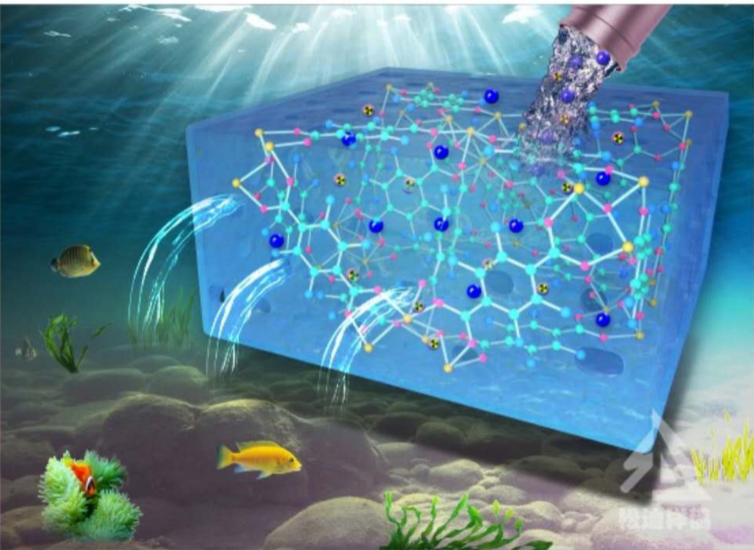Chinese researchers completely summarized recent progress in application of highly porousmetal–organic frameworks, or MOFs with excellent chemical stability and abundant functional groups into the area of capturing various types of hazardous metal ion pollutants, according to a review published in Chemical Society Reviews.
Nuclear energy is currently undergoing rapid development and attracting broad research effort with the increase in energy demand. In the meanwhile, large amounts of radioactive waste are released into the environment due to the nuclear fuel cycle and mining operations, which causes a long-term threat to the surface and subsurface environments. Radioactive metal ions can cause progressive and irreversible damage to cells, lymph nodes, lungs, livers, pancreases, and bones because of its high toxicity and radioactivity even at low concentration.
So, highly efficient removal of metal ion pollutants remains a vital task from the biological and environmental standpoint due to their harmful effects on human health and the environment.
Scientists have been seeking for effective materials to capture the toxic and radioactive metal ions to avoid the danger to human. Over the years, the research groups led by Associate Prof. CHEN Changlun from Institute of Plasma Physics, Hefei Institutes of Physical Science and Prof. WANG Xiangke from North China Electric Power University have made important contributions to the related field of nanomaterials and MOFs for enrichment of radioactive elements.
This time they were invited to publish a review article in Chemical Society Reviews, titled 'Metal-organic framework-based materials: superior adsorbents for the capture of toxic and radioactive metal ions'.
In the paper, they present a comprehensive review of recent developments in MOFs and MOF-based materials for the removal of toxic/radioactive metal ions. They examined analyses of adsorption performance and approaches to mechanistic investigations, including batch experiments, modern advanced spectroscopy techniques, and theoretical calculations.
In addition to the review, they also assessed the adsorption behaviors of MOFs and their composites with other traditional and advanced artificial nanomaterials. MOFs have emerged as an extensive class of crystalline materials with ultrahigh porosity (up to 90% free volume) and enormous internal surface areas (ranging from 1000 to10 000 m2/g) as well as stable framework structures. As adsorbents for the removal and pre-concentration of toxic/radioactive metal ions, MOFs and MOF-based materials showed various attractive characteristics, such as fast adsorption kinetics, high adsorption capacity, superior selectivity and excellent reusability.
Their review summarized recent process in the application of MOFs for the capture of toxic and radioactive metal ions, and proposed insights into future research opportunities and challenges in the hope of stimulating more researchers to engage in this new field of MOF-based materials for environmental pollution management.
Link to the paper: Metal-organic framework-based materials: superior adsorbents for the capture of toxic and radioactive metal ions

Metal-organic frameworks materials for the treatment of radioactive wastewater. (GAO Yang)
Contact:
ZHOU Shu
Hefei Institutes of Physical Science (http://english.hf.cas.cn/)
Email: zhous@hfcas.ac.cn
 Tel: +86-551-65591206
Tel: +86-551-65591206
 Fax: +86-551-65591270
Fax: +86-551-65591270
 Emai: zhous@hfcas.ac.cn
Emai: zhous@hfcas.ac.cn
 350 Shushanhu Road
350 Shushanhu Road